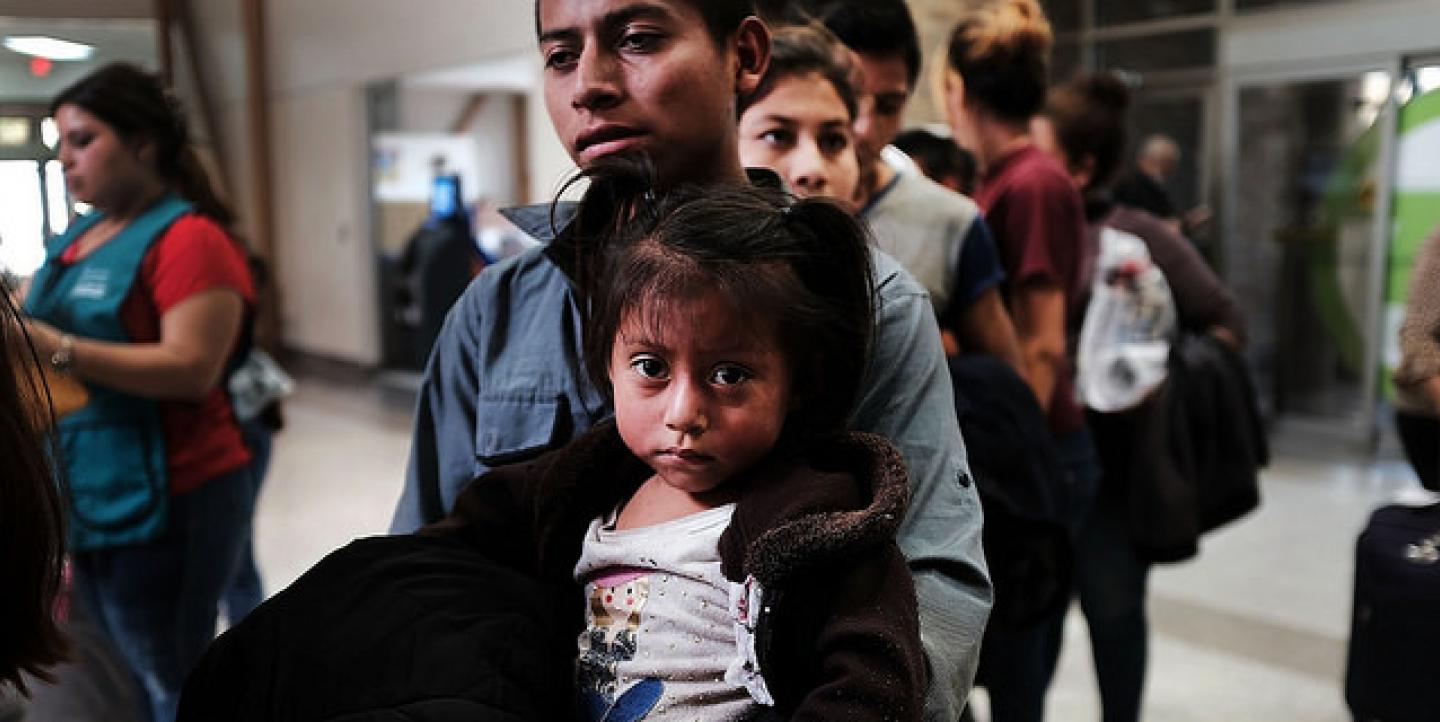In a Washington Post photo essay titled “The Crossings,” photographer Salwan Georges documents the plight of migrants attempting to cross the U.S. – Mexican border in search of a better life. At the end of the story, he addresses fellow journalists.
“While the separation of children from parents was new, the story of desperate families trying to enter the United States was not. One thing that has now changed, however, is that more Americans have been moved to act on behalf of these families,” Georges wrote. “It will be crucial for journalists to continue to be at the border, to see the events firsthand — and to share stories and pictures with the world.”
In June, the Ethical Journalism Network (EJN) posted an article on the lasting impact of powerful images and their capacity to foster social and political change. The article noted, “Recent images and footage of migrant children housed in wire cages near the United States’ southern border have fueled global outrage.” They also sparked changes in U.S. immigration policy.
The message from EJN is clear: Media coverage of migration does make a difference.
That is particularly important at a time when more people are on the move than ever before, according to the World Health Organization. The United Nations estimated that the number of international immigrants in 2017 was 258 million. The Pew Research Center calls global migration’s rapid rise, “One of the most significant demographic trends today.”
For the media, there is an important takeaway. The immigration and refugee crisis, at home and abroad, will not fade any time soon. What are the best ways to cover this demanding beat?
During my time as a reporter at the Des Moines Register, I traveled with a group of El Salvadoran migrants that sought safety from the imprisonment and torture that many of them faced in their homeland. The group traveled along an underground network of churches and private homes that hid them from immigration officers.
I learned some important lessons through the experience. For example, when it comes to gaining trust, nothing beats being a witness on the scene. I also learned that giving a voice to victims leads to powerful storytelling and that providing historical and cultural context must be part of the equation.
The challenges at border crossings today are formidable. Migrants are often afraid to talk to reporters or be identified, and once they are bused to detention centers, opportunities for interviews or follow-up stories are slim. Journalists then turn to activists, human rights lawyers and local law enforcement for information.
To shed light on the process, IJNet pulled together a list of resources that provide best practices, guidelines and expert advice on covering migration.
“Reporting on Migration and Minorities: Approach and Guidelines,” edited by Respect Words Project, offers practical recommendations such as avoiding simplification of migration issues and putting migration movements in context. Among the advice: Pay attention to why people feel forced to leave their homeland and include the voices of refugees, asylum seekers and migrants who are most affected.
“Tips for migration coverage,” published by the European Federation of Journalists, suggests using international tools, such as the European Union’s Agency for Fundamental Rights’ Media Toolkit, Ethical Journalism Network’s ethical guidelines on migration reporting, and the Charter of Roma, a code of conduct regarding asylum seekers, refugees, migrants and victims of trafficking. All of these offer valuable guidelines and are worth exploring.
“Media and Trafficking in Human Beings Guidelines,” authored by the European Journalism Network, reminds journalists that trafficking is a risk for migrant populations. The guide states, “Journalism should do no harm. Show compassion in your reporting. Point towards solutions to the physical, emotional and crisis that trafficked persons endure.” To assist journalists, the website provides newsroom strategies, interviewing tips, links and contacts for covering human trafficking.
“Media Coverage on Migration: Promoting a Balanced Reporting,” created by the International Organization for Migration (IOM), advises reporters to seek a variety of sources — most of all migrants themselves — and to provide analyses of complex issues rather than simplistic reports. IOM also makes a case for recruiting migrant journalists to cover stories on the topic.
“Covering Immigrants & Immigration: Tips from Experts” from the Dart Center for Journalism and Trauma, explores best practices from migration beat veterans. They address the question: “How has the immigration coverage changed since you’ve been on the beat?” For example, Maria Sacchetti of the Boston Globe, says, “Hang out in cafés and other places that [migrants] hang out in. Leave your business card and cell phone number behind, and let people know that they can reach you anytime, day or night. Spend more time in jails — you can set up an account to get collect calls from prison — and in immigration courts — immigration lawyers are great resources, and one day in immigration court will blow your mind.”
The International Society for Traumatic Stress Studies has released a special issue on refugee children and their families, including “articles on the traumatic effects of child separation and resources for treating and evaluating the mental health of refugees and young people dealing with forced separation.” The content is available for free through the end of September 2018.
Finally, two tools for backgrounding the homelands of migrants and refugees are Central Intelligence Agency World Factbook and BBC’s country profiles. Both provide broad-based information on governments, the economies and situations that might send people on the run.
Main image CC-licensed by Flickr via Michael Thielen.


